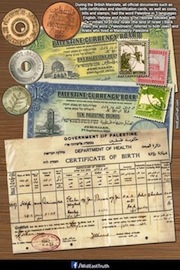Posted by editor

Subscribe to our
mailing list
|
 Wed Nov 12, 2008 6:02 am Foreword to Hamas vs. Fatah: The Struggle for Palestine Wed Nov 12, 2008 6:02 am Foreword to Hamas vs. Fatah: The Struggle for Palestine
|
 |
|
| |
Foreword to Hamas vs. Fatah: The Struggle for Palestine
By Daniel Pipes
November 11, 2008
Divisions among Palestinians generally do not receive their due attention, Jonathan Schanzer correctly points out, in the immense academic and journalistic coverage of the Arab-Israeli conflict. Instead, an official, propagandistic, and inaccurate party line holds sway. To quote Rashid Khalidi, a former Palestine Liberation Organization employee now teaching at Columbia University,[i.] a "uniform Palestinian identity" exists. The Palestinians are one—full stop, end of story.
This simplistic and ahistorical understanding largely dominates how outsiders see the Palestinians, to the near exclusion of other, more nuanced analyses, and the party line afflicts the whole history of the conflict—the period before 1948,[ii] the heyday of pan-Arabism, the emergence of the Palestine Liberation Organization, and especially the 20-year period, 1987 to 2007, that Schanzer studies in the following pages. As he puts it, "While the mainstream American media overreported the violence between the Palestinians and Israelis, the ‘other struggle for Palestine,' which began to play out between Fatah and Hamas, received little to no coverage in America."
Many differences divide Palestinians—Muslim and Christian, urban and rural, sedentary and nomadic, rich and poor, regional—but Schanzer, a highly talented historian of the modern Middle East, establishes here the nature, extent, and significance of two specific intra-Palestinian tensions: primarily that fight between Fatah and Hamas, for this has the most acute and immediate political importance, and secondarily the dichotomy between the West Bank and Gaza.
Hamas versus Fatah traces the history of the two groups' relations from the emergence of Hamas in late 1987 to the Hamas conquest of Gaza in June 2007, then surveys the implications of this hostile but subtle relationship. In summary, Schanzer traces the simultaneous weakening of Fatah and strengthening of Hamas over this period. By 2008, Fatah's leader, Mahmoud Abbas, is enfeebled, "no more than the president of the Muqata compound in Ramallah," while Hamas rules the roost in Gaza, threatens to seize power on the West Bank, sends hundreds of rockets into Israel,[iii] and even challenges the government of Egypt.[iv]
This dramatic shift in fortunes can be attributed to many factors, but perhaps most of all to the fact that whereas Yasir Arafat's Fatah was all things to all Palestinians, Hamas represents a coherent movement, with a fixed outlook and specific goals. Time and again Schanzer demonstrates how the discipline and purpose of Hamas has given it the edge over the corrupt and amorphous Fatah.
Palestinian self-destruction, neglected or not, ranks as a major U.S. foreign policy concern, especially since 1993, when Washington cast its lot with Yasir Arafat, Fatah, the Palestine Liberation Organization, and the Palestinian Authority, hoping against hope that Western backing would transform a revolutionary movement long allied with the Soviet Union into an agency of good government and status quo aspirations.
Among its many conceptual mistakes, this hope implied devoting too little attention to the competition raging between Fatah and Hamas since 1987 for the backing of the Palestinian street, a competition that impelled Fatah not be seen as going easy on Israel but as aggressively anti-Zionist as Hamas. Given that Fatah was in negotiations with successive Israeli governments and it had to make gentle noises to the Israeli and western media, the organization had to take a particularly ferocious stance on the ground. What American (and Israeli) policy makers tended to dismiss as incidental turned out to have deep and abiding consequences; suffice it to say that the Palestinian constituency for accepting Israel as a Jewish state has steadily lowered since the heady days of late 1993, to the point that it now represents only about a fifth of the body politic.
Schanzer also documents the cost for U.S. foreign policy of inattention to the Fatah-Hamas fitna (Arabic for "internal strife"). For one thing, it led to a misreading of the Palestinian mood in the period leading up to the January 2006 elections, causing Washington to keep promoting them in the happy expectation that its favorite, Fatah, would win; when elections came, the crushing victory by Hamas over Fatah came as a shock. For another, in early 2007, what Schanzer calls "relatively weak mainstream media coverage" of Fatah-Hamas fighting meant that the June conquest of Gaza by Hamas came as another surprise to the Bush administration. In brief, those responsible for American interests neither anticipated nor prepared for the two climatic events in Hamas's rise to power, a situation as embarrassing as it is revealing. So limited an understanding of the issues almost guarantees severe policy mistakes.
Why, given the extent of intra-Palestinian differences and their importance, has this subject been so rudely ignored? Schanzer prudently stays away from this sensitive topic, but what keeps researchers away in droves should at least be mentioned. I believe it reflects the fact that few academics have a genuine interest in the Palestinians. Rather, they devote outsized attention to this otherwise small and obscure population because it represents a convenient and potent tool with which to malign Israel.
Organizations intent on criticizing Israel's every move[v] by default become masters of tiny Palestinian grievances. They document in loving detail residential and transportation patterns in the West Bank, water and electricity grids in Gaza, and impediments to reaching holy places in Jerusalem. Those intent on showing Israel in a bad light must champion the Palestinians with allegations of mass executions, torture, denial of hospital services—but this should not be confused with genuine concern for the Palestinians. Nor does it lead to an understanding of Palestinian life.
It particularly pleases me that the author undertook some of his initial research for this study while at the Middle East Forum, the research institute I direct, notably his studies on Fatah versus Hamas,[vi] on comparative Palestinian uprisings,[vii] and on the Gaza–West Bank split.[viii] This last discussion, elaborated here in chapter 11, offers a particularly valuable review of the many and growing differences between the "two Palestines," a subject on which there is hardly anything in English but the writings by Jonathan Schanzer.
Most books on the Arab-Israeli conflict tread well-worn ground. Hamas versus Fatah offers an original analysis of a key topic.
Notes
i. Asaf Romirowsky and Jonathan Calt Harris, "Arafat Minion as Professor," Washington Times, July 9, 2004.
ii. For a recent and notable exception, see Hillel Cohen, Army of Shadows: Palestinian Collaboration with Zionism, 1917–1948 (Los Angeles: University of California Press, 2008).
iii. Izz al-Din Al-Qassam Brigades Web site, "In January 2008 Al Qassam Brigades fired 540 rocket and missile and killed two Zionists," February 2, 2008.
iv. Cable News Network, "'Dozens Hurt' in Gaza Border Clashes," January 27, 2008.
v. An excellent case study of this phenomenon can be found in Erik R. Nelson and Alan F. H. Wisdom, Human Rights Advocacy in the Mainline Protestant Churches (2000–2003) (Washington, DC: Institute on Religion & Democracy, 2004).
vi. Jonathan Schanzer, "The Challenge of Hamas to Fatah," Middle East Quarterly (Spring 2003).
vii. Jonathan Schanzer, "Palestinian Uprisings Compared," Middle East Quarterly (Summer 2002).
viii. Jonathan Schanzer, "A Gaza-West Bank Split? Why the Palestinian Territories Might Become Two Separate States," Middle East Intelligence Bulletin (July 2001).

|
|
|
|











